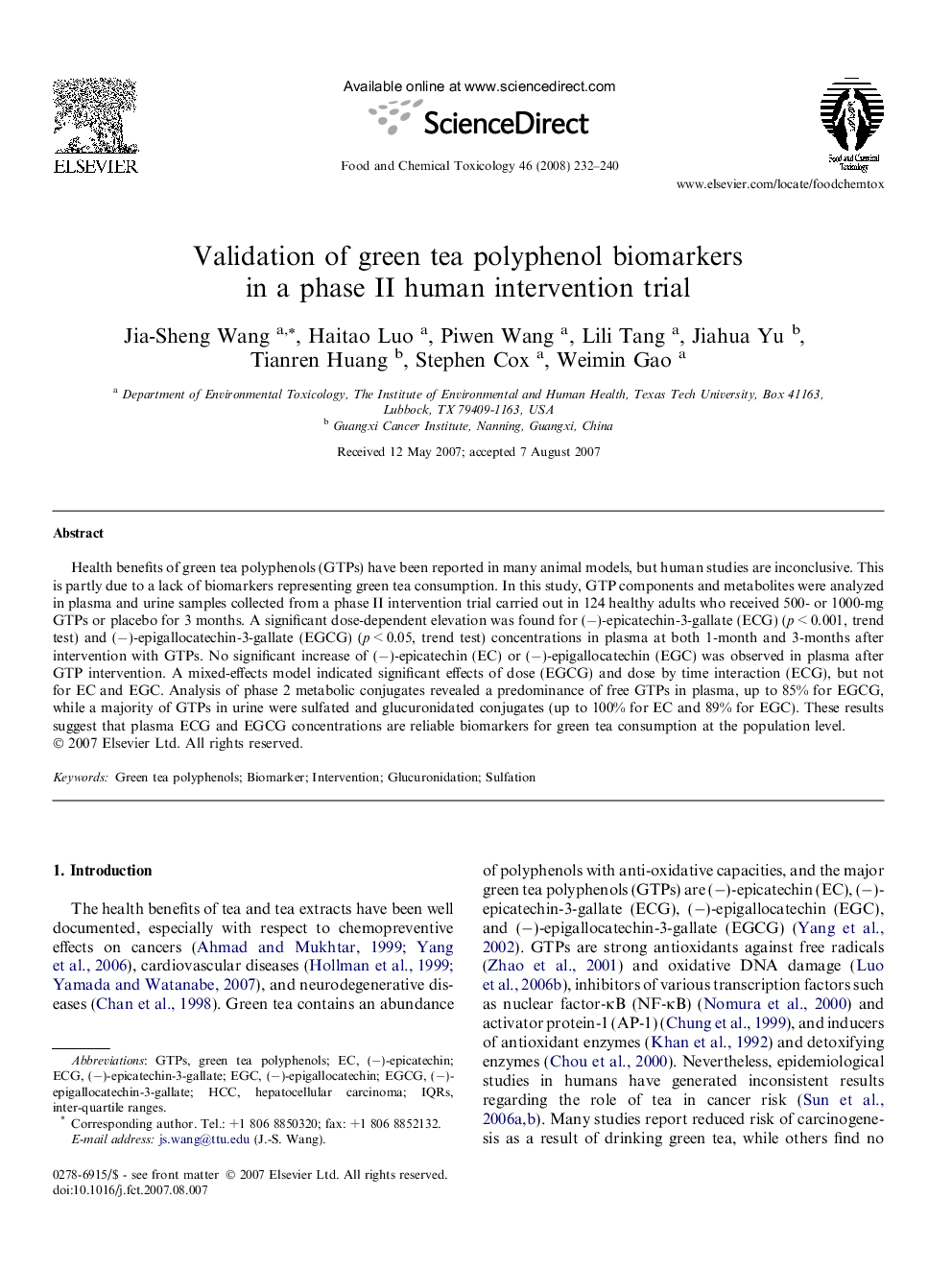| Article ID | Journal | Published Year | Pages | File Type |
|---|---|---|---|---|
| 2586725 | Food and Chemical Toxicology | 2008 | 9 Pages |
Health benefits of green tea polyphenols (GTPs) have been reported in many animal models, but human studies are inconclusive. This is partly due to a lack of biomarkers representing green tea consumption. In this study, GTP components and metabolites were analyzed in plasma and urine samples collected from a phase II intervention trial carried out in 124 healthy adults who received 500- or 1000-mg GTPs or placebo for 3 months. A significant dose-dependent elevation was found for (−)-epicatechin-3-gallate (ECG) (p < 0.001, trend test) and (−)-epigallocatechin-3-gallate (EGCG) (p < 0.05, trend test) concentrations in plasma at both 1-month and 3-months after intervention with GTPs. No significant increase of (−)-epicatechin (EC) or (−)-epigallocatechin (EGC) was observed in plasma after GTP intervention. A mixed-effects model indicated significant effects of dose (EGCG) and dose by time interaction (ECG), but not for EC and EGC. Analysis of phase 2 metabolic conjugates revealed a predominance of free GTPs in plasma, up to 85% for EGCG, while a majority of GTPs in urine were sulfated and glucuronidated conjugates (up to 100% for EC and 89% for EGC). These results suggest that plasma ECG and EGCG concentrations are reliable biomarkers for green tea consumption at the population level.
